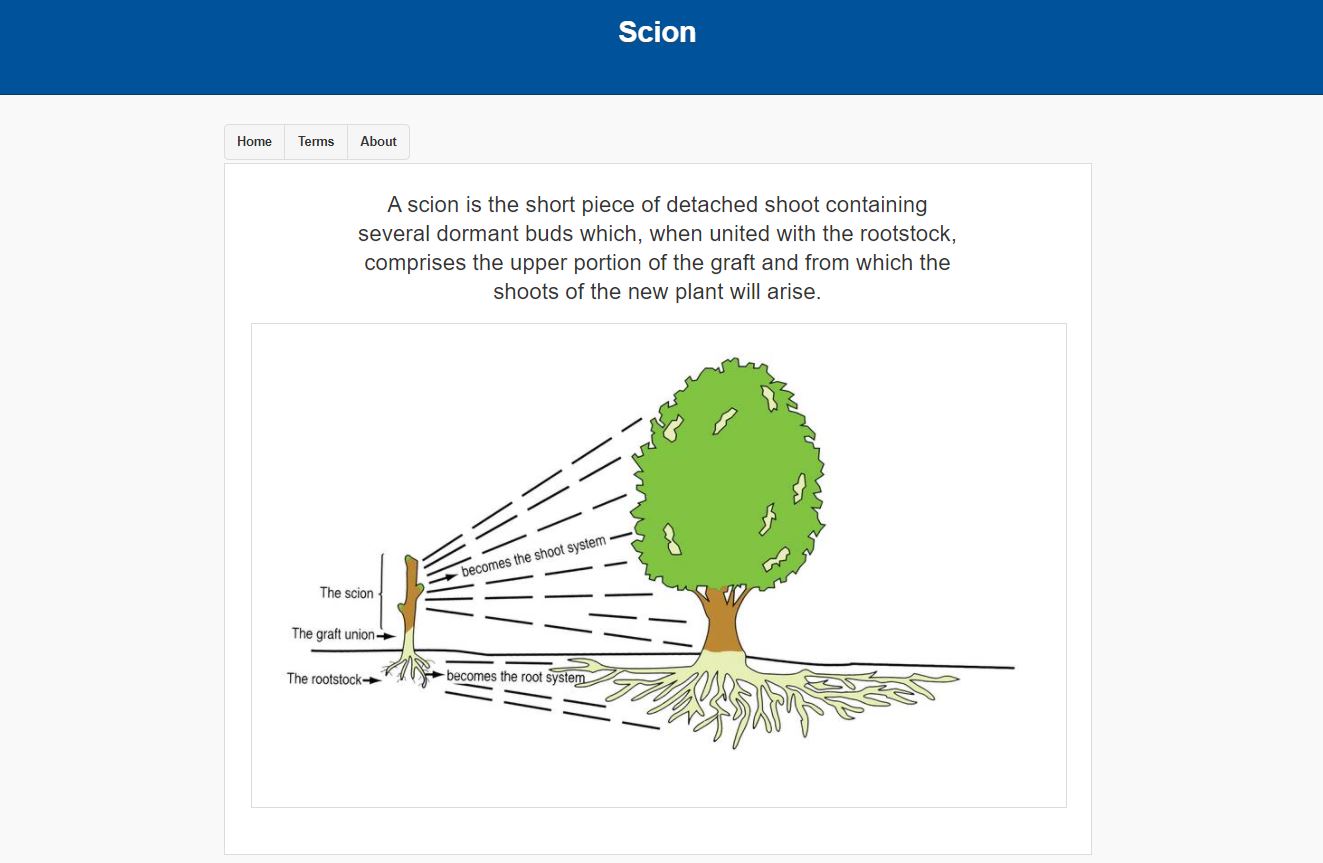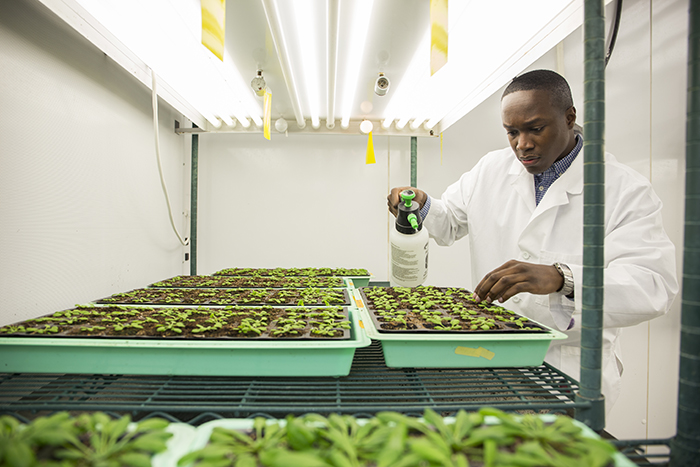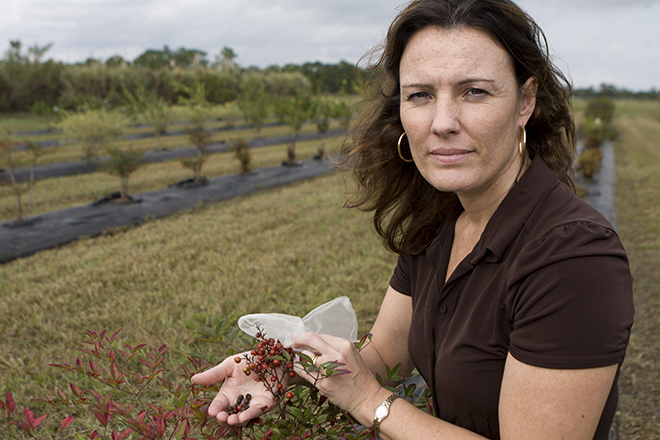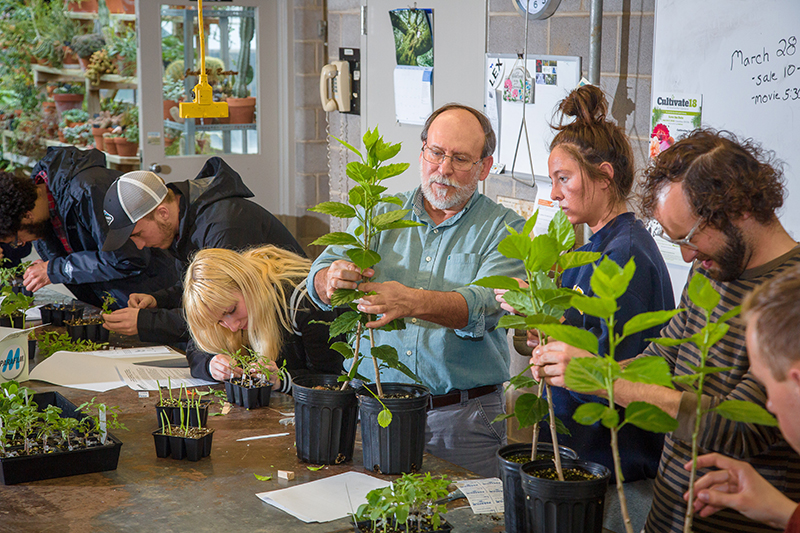The Florida Gators and Kentucky Wildcats have been meeting on the football field since 1917, and the teams will meet again this Saturday at UK’s Kroger Field.
Athletic rivalries aside, the two land-grant universities share a common goalpost: to prepare students for careers in agriculture, food production and natural resources and support professionals in those industries.
It’s a goal that had UK professor Bob Geneve and UF professor Sandra Wilson team up to continue a six-decade legacy: “Hartmann and Kester’s Plant Propagation: Principles and Practices,” the seminal reference textbook for plant science learners and experts.

With more than 1,000 pages, the book’s ninth edition, which Wilson and Geneve edited with Texas A & M professor Fred Davies, covers a deceptively simple topic: plant propagation, or how to grow plants.
“Plant propagation has played a key role in the evolution of human society,” said Geneve, horticulture professor for the UK College of Agriculture, Food and Environment.
“Think about it: All the fruits, vegetables and cereal grains you’ve ever eaten needed to be propagated. All the trees, shrubs and flowers found around our homes also needed to be propagated,” Geneve said. “We have all experienced propagating a plant from seed, and it seems so fundamentally simple, but there are many ways to propagate a plant and the subtle complexities can be fascinating.”
To understand how a little seed turns into a full-fledged plant, students and horticultural professionals need to know a lot of terminology. The current editors of “Plant Propagation” developed a nearly 500-term online glossary called PropG as a supplement to the textbook or as a stand-alone tool. PropG was funded through a distance education mini-grant from the UF/IFAS College of Agricultural and Life Sciences.
Each entry in PropG includes a definition of a term with one or more visual aids, such as photos, diagrams, illustrations and videos. Users may perform a direct search, browse a complete list of terms or view terms by topic and subtopic, allowing a deeper dive into the concepts.

“It’s sort of like Wikipedia in that you can go down a plant propagation rabbit hole,” Wilson said with a laugh. Wilson is a professor of environmental horticulture in the UF Institute of Food and Agricultural Sciences (IFAS).
But unlike visitors to Wikipedia, PropG users can be confident they are getting scientifically accurate information backed up by decades of expertise and research.
The original “Plant Propagation: Principles and Practices” was published in 1959 by Hudson Hartmann and Dale Kester, both professors at the University of California, Davis. Over the years, the book expanded to stay current with the latest research and techniques. The text covers the evolution of plant propagation in human society, propagation by seed, plant tissue culture, cuttings, grafts and division, as well as specific propagation protocols for fruits, nuts, trees and ornamental annuals and perennials.
The glossary has gone through its own evolution, one that mirrors the rapidly changing landscape of educational technology.
“One of the reasons I came on for the ninth edition was my background in distance education,” Wilson said. “We wanted to create a tool that students could use not just alongside the textbook but also for other coursework in the plant sciences. We wanted it to be accessible to anyone who needed the information.”

But turning a collection of text and images into a searchable, interactive online glossary was not an easy task, especially when the project involved two universities with different servers, file-sharing services and technical support.
Aaron Sotala, an instructional designer at the Center for Online Learning and Technology in the UF/IFAS College of Agricultural and Life Sciences, was up to the task.
“Getting the glossary to where it needed to be from a technical and accessibility standpoint was challenging certainly, but I enjoyed working on something I knew would be a resource for years to come,” Sotala said. “PropG is very much a prototype for other future tools that serve a similar purpose.”
Sotala’s goal was to ensure PropG remained functional and relevant in an ever-changing technological landscape for as long as possible.
“You don’t see textbooks that have CD-ROM components anymore because that format has become obsolete,” Sotala explained. “The earlier online instructor’s resource was created in 2011. It wasn’t mobile friendly, but in 2017, we knew students and anyone in the field were probably going to use their phones to access this information.”
Coded with JavaScript, PropG has all the components of a modern, accessible website, with layout, images and it is video compatible with smaller screens. The tool’s build means it’s easy to update and expand as needed, Sotala said. While the tool exists as a web application and not an app proper, users may easily add a quick access icon to their mobile device.
While a plant propagation glossary has an inherently niche audience, more people use it than one might expect. On average, PropG receives upwards of 1,000 weekly visits, including several hundred return visitors.
“I’m mainly interested in tracking the return visitors, because when people are using PropG as a resource and tool, as we hope, they are probably going to come back to it again and again,” Sotala said. “And we know that a lot of students are using it; traffic peaks during exam time and wanes between semesters.”
In her own plant propagation course, Wilson said the glossary has a marked impact on student learning.

“Surveying the students before and after they use the glossary, there is a considerable increase in their perceived knowledge and confidence with the material,” Wilson said.
Sotala has been contacted by high school teachers who have used the glossary in their classrooms, as well as those working in the horticulture industry who are studying to move into higher positions.
“When we first created PropG, we were focused on college students, but it’s great to see that it’s helping other people as well,” Sotala said.
Editing a legacy textbook like “Plant Propagation” means continuous reevaluation and updating. Geneve and Wilson are thinking ahead to the tenth edition.
“We owe it to the original authors to continue the project and provide this foundation for students and industry,” Geneve said.
Geneve, Wilson and colleagues at other universities also guest lecture to each other’s classes and co-author research papers.
“We do talk about college sports, though,” Geneve said. “You can’t get away with working at a school like UK or UF and not have seen the game the weekend before!”
But at the end of the day, after the fans have left the stadiums and the tailgaters have packed up, people like Geneve, Wilson and others will return to playing for team propagation science — something for which all who enjoy eating food or gardening can cheer.
 0
0


